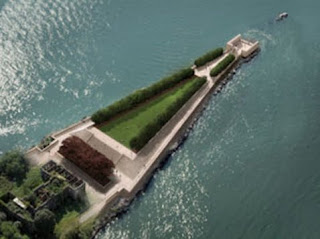 On Friday, June 25th, 2010, the Schenectady County Historical Society will host a reunion of Civilian Conservation Corps (CCC) alumni, family, & friends, from 10:00 am to noon at 32 Washington Avenue, Schenectady, NY. Marty Podskoch, CCC researcher, will give a short presentation and will invite participants to share memories of the camps.
On Friday, June 25th, 2010, the Schenectady County Historical Society will host a reunion of Civilian Conservation Corps (CCC) alumni, family, & friends, from 10:00 am to noon at 32 Washington Avenue, Schenectady, NY. Marty Podskoch, CCC researcher, will give a short presentation and will invite participants to share memories of the camps.
The Civilian Conservation Corps (CCC) began on March 31, 1933 under President Roosevelt’s “New Deal” to relieve the poverty and unemployment of the Depression. Camps were set up in many New York towns, state parks, & forests. Workers built trails, roads, campsites, dams, fire tower observer’s cabins & telephone lines- fought fires- stocked fish- and planted millions of trees. The CCC disbanded in 1942 due to the need for men in WW II.
A part of the history of the CCC was saved recently by the daughter of a man who was in one of the camps. She donated a CCC Schenectady District yearbook for 1937 to the Historical Society. The yearbook has a history of the District, along with photos of officers and the men at the camps. Many men from Schenectady were in Company 219 (Cherry Plain, NY)- and Company 222 (Middleburg, NY).
Marty Podskoch is a retired teacher and the author of five books: Fire Towers of the Catskills: Their History and Lore, two Adirondack fire tower books: Adirondack Fire Towers: Their History and Lore, the Southern Districts, and Northern Districts and two other books, Adirondack Stories: Historical Sketches and Adirondack Stories II: Historical Sketches from his weekly illustrated newspaper column.
Presently, Marty Podskoch is conducting research on the Civilian Conservation Camps in the Adirondacks and Connecticut. He is interested in meeting individuals who may have CCC stories to contribute to his next book. Marty Podskoch will have all of his books available after the presentation for sale and signing. For those unable to attend this reunion, Marty Podskoch has planned five other reunions:
June 22 6:30 pm Oneida Historical Society, 1608 Genesee St., Utica (315) 735-3642
June 23 6:30 pm Franklin Co. Hist. Society, 51 Milwaukee St. Malone (518) 483-2750
June 26 1 pm Fulton Co. Hist. Society, 237 Kingsboro Ave., Gloversville (518) 725-8314
June 27 2 pm Bolton Landing Hist. Society, Bolton Free Library (518) 644-2233
For more information on the reunion in Schenectady, contact Katherine Chansky,Librarian/Archivist, Grems-Doolittle Library at: (518) 374-0263, [email protected]. The Schenectady County Historical Society is wheelchair accessible, with off-street parking.
If any one has information or pictures to share of relatives or friends who worked at one of the CCC camps, please contact, Katherine Chansky (518) 374-0263 at the Grems-Doolittle Library, or Marty Podskoch at: 36 Waterhole Rd., Colchester, CT 06415 or 860-267-2442, or [email protected]
 Gordon Parks bought his first camera in a pawn shop and got his first real photography job at the New Deal’s Farm Security Administration (FSA).”American Gothic,” his bold arrangement of a White House cleaning lady with a mop in front of a flag, got him in trouble on his first assignment.
Gordon Parks bought his first camera in a pawn shop and got his first real photography job at the New Deal’s Farm Security Administration (FSA).”American Gothic,” his bold arrangement of a White House cleaning lady with a mop in front of a flag, got him in trouble on his first assignment.






